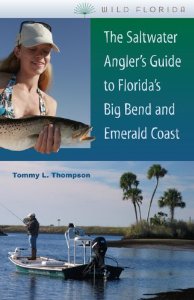All About Spanish Mackerel and Bluefish–Fall Big Bend Favorites
From: The Saltwater Angler’s Guide to Florida’s Big Bend and Emerald Coast
Spanish Mackerel and Bluefish
You can either target Spanish mackerel and bluefish—or they can target you. During the warmer months, finding these species is as easy as finding seagulls wheeling over bait schools in bays, off beaches, or in passes. That’s seagulls–not pelicans. Gulls tend to eat scraps left behind by predators attacking baitfish, while pelicans tend to dive into schools of small fish and swallow them whole. If you see pelicans diving into bait, there may or may not be predatory fish there.
When you do find gulls scavenging near bait schools, look for fish striking the surface and get ready. Preparing for toothy Spanish mackerel and blues almost always means getting rigged with light wire leader. 40-pound fluorocarbon might work, but toothy Spanish and blues can rough it up pretty quickly. Keeping a few store-bought Liquid Steel leaders in the bottom of your tackle box is not a bad idea. You can also make your own leaders with 12 to 14 inches of fine wire tied to a dark-colored swivel and a snap, using haywire twists. Many anglers enjoy tossing lures, including topwater plugs, to schools of striking mackerel or blues, but most prefer trolling the edges of a striking school of fish. Popular trolling baits for these fish are the #00 Clarkspoon or a 1/2-ounce Flowering Floreo jig with its fiber tail trimmed back to the end of the hook shank. The fluorescent orange Floreo jig is particularly effective, and will work even better if you put a narrow, two-inch strip of belly meat cut from the first fish you catch on it. Strips of mullet belly meat work well too, and can be cut, heavily salted, and frozen in advance of a fishing trip for Spanish mackerel or bluefish.
Spanish mackerel and bluefish can also appear out of nowhere, in water as shallow as a foot. Many a jig or topwater plug simply disappears and it’s usually the result of one of these fish foraging the edge of inshore rock piles or sandbars. However, if you’re lucky, the fish will grab your bait and not your line and you’ll have extra bonus for that day’s fishing.
Spanish mackerel and bluefish are both good to eat, but neither freeze well. Blues should be eaten the same day they’re caught, and Spanish mackerel will refrigerate for a day or two. Both are oily and smoke well on home smokers. You’ll catch larger versions of both species in the fall, after they’ve had a chance to eat and fatten up all summer, but the smaller springtime fish are good eating too.


